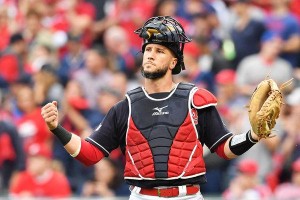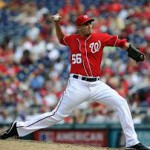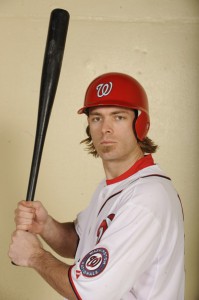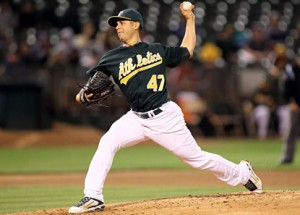I’m not sure why i got on this mental tangent, but here goes.
When was the last time the Nats developed a quality starting catcher from cradle to grave (so to speak) from our system? Here’s a quick glance at the Nats leading catchers by games played since they arrived in Washington:
- 2017-2018: Matt Wieters free agent acquisition
- 2014-2016: Wilson Ramos: trade acquisition for Matt Capps while still a minor leaguer
- 2013: Kurt Suzuki: trade acquisition from Oakland
- 2012: Jesus Flores: rule-5 draftee
- 2011: Ramos
- 2010: Ivan Rodriguez : Free agent acquisition
- 2009: Josh Bard: free agent acquistion
- 2008: Flores
- 2005-2007: Brian Schneider: drafted by Montreal Expos 5th round 1995
The answer is Schneider. Not since Brian Schnieder has this franchise started a home-grown catcher. Thats more than a decade of drafting and player development.
(No, I don’t count either Flores or Ramos by the way. Flores as a rule-5 draftee was developed by the Mets, and Ramos spent 6 years in Minnesota’s farm system before we got him).
Sprinkled into the above include backups that we’ve definitely developed in house, guys like Spencer Kieboom and Pedro Severino and Sandy Leon and Jhonatan Solano … but none of these guys were really starters for any period of time, and none were impactful enough to not force the team to go back into the FA market again and again.
This trend continues for 2019, with the team buying not one but TWO catchers this off-season: Yan Gomes via trade and then the return of Suzuki via FA.
So I thought it’d be interesting to look at what depth we have now under Gomes/Suzuki, project where last year’s frequent MLB contributors like Kieboom will end up in 2019, and see what the pipeline looks like.
Nats Full-system Catcher Depth Chart:
- MLB: Gomes/Suzuki
They’re on record (per the reports we’re reading from bored beat writers) as both being “ok” with the planned split in playing time. They’ll also get PH opportunities, which makes sense as long as its a low-risk situation (this also implies we’d need to have a designated emergency 3rd catcher: Matt Adams anyone?)
- AAA: SKieboom, Severino, Raudy Read.
So, both Kieboom and Read have 2019 options, while Severino does not. Severino’s defense speaks for itself, but unfortunately so does his offense; his career OPS+ in four part-time MLB seasons and nearly 300 plate appearances is just 48. I think the team keeps him around til the end of Spring Training to cover for injury, then DFAs him and tries to sneak him through to AAA. If that happens, I think Read gets pushed back to AA. Or maybe not; maybe they just cut ties with him completely. I think we know what we have with Kieboom too. Read is the interesting one; his PED suspension cost him both development time and good will within the org; will he start over Kieboom and continue to develop at AAA? He hit decently enough at AA last year (.286) so I think he’s ready for the AAA challenge. He remains generally the highest ranking Catcher prospect in the system … but may not be the first line of defense called up to cover for injury right now.
- Next guy promoted: probably Kieboom, then Read.
- Most likely to succeed at MLB level: Read. I think we’ve seen what we will see out of Kieboom.
- Most likely to get cut first: Severino for options purposes in April.
- AA: Taylor Gushue, Tres Barrera, Matt Reistetter
Ironically these first two are also the two NRI catchers invited to 2019 spring training. They’re not there to make the team; they’re there to catch the gazillion arms who need to throw. Gushue struggled at the plate in 2018 in AA (.212) but by all accounts is a pitcher favorite to call games (sounds a lot like Severino). Meanwhile Barrera hit decently splitting time in High-A in 2018. I can see an even split between these two in Harrisburg in 2019. Meanwhile the system still has the NDFA Reistetter hanging around; in his 6 year minor league career he’s got appearances at literally every domestic team. He likely gets assigned to the Harrisburg roster but hangs out in XST waiting to cover for injury.
- Next guy promoted: Barrera
- Most likely to succeed at MLB level: Barrera
- Most likely to get cut first: Reistetter
- High-A: Jakson Reetz , Alex Dunlap, Alejandro Flores,
Reetz is nearly in “draft bust” territory, basically hanging around thanks to his being a 3rd rounder in 2014. He’s now got 4 full minor league seasons under his belt and seems to be getting pushed northwards in the system less based on production and more based on his signing bonus. At some point, the team may have to cut bait. I see him serving primarily as a backup. Meanwhile, Dunlap (a 29th rounder in 2017) hung around XST for a bit, then out-played Flores in Hagerstown and basically became the starting catcher. I put both Dunlap and Flores here though b/c of who’s targeted for Low-A. There’s still somewhat of a gap here in the system, but we could see some fast-movers pushing into Potomac this year.
- Next guy promoted: Dunlap
- Most likely to succeed at MLB level: none here really projecting to MLB at this point.
- Most likely to get cut first: Reetz
- Low-A: Israel Pineda, Nic Perkins
Perkins was a 28th rounder in 2017, was the main catcher in Short-A in 2018 and could make sense to slide right to Low-A, but he’ll play second fiddle to Pineda, who has burst onto the scene, does not turn 19 until April and now looks like our best chance to develop a starting catcher since Schneider. Of course … it is folley to project an 18 yr old’s future success. But, like Yasiel Antuna and Luis Garcia before him, the Nats should have no qualms of promoting a successful teenager right to low-A. So Look for Perkins to back up Pineda in Hagerstown to open the season.
- Next guy promoted: Perkins
- Most likely to succeed at MLB level: Pineda
- Most likely to get cut first: none in the short term
- Short-A: Tyler Cropley, Wilmer Perez, Adalberto Carrillo, 2019 draftee(s)
Perez was an J2 IFA signing in 2016 who hit well in the DSL in 2017 and adequately in the GCL in 2018 and makes sense to be the starter in Short-A in 2019. Carrillo was a late-round 2017 draftee who is hanging around. Cropley was our 2018 8th round pick, a senior low money sign who was one of just two 2018 drafted catchers, and may have to really impress to stick around give the small amount of investment the team has in him. All three appeared briefly in Auburn last year and seem to make sense to return this year.
- Next guy promoted: Perez
- Most likely to succeed at MLB level: none projecting to MLB from here at this time.
- Most likely to get cut first: Cropley
- GCL: Onyx Vega, Anthony Peroni, Geraldi Diaz, 2019 draftee(s)
Both Vega (a 2018 draftee) and Peroni (2017 draftee) were subs in GCL last year behind the likes of (primarily) Perez, and both seem like they should return to GCL. Peroni only hit .177 and is entering his 3rd pro year so he likely seems like he’ll be released upon the 2019 drafting of more catcher talent, or upon the potential promotion from the DSL catcher candidates like Geraldi Diaz (a 2017 IFA signee who might be ready to come state-side).
- Next guy promoted: Vega
- Most likely to succeed at MLB level: none projecting to MLB from here at this time.
- Most likely to get cut first: Peroni
So that’s our Catcher depth. Did I miss anyone?




